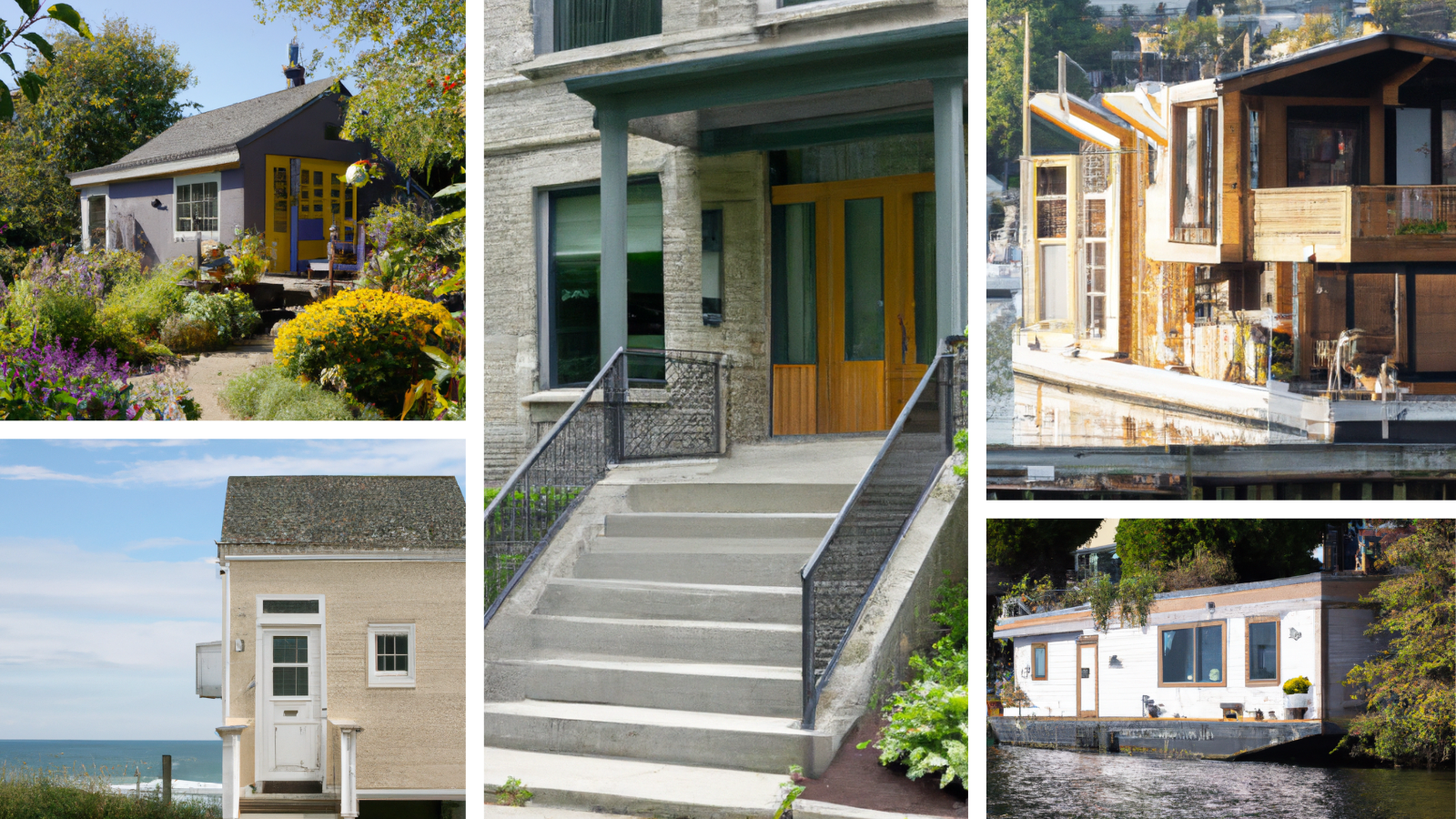New Chapter, New Home: Designing Your Perfect Empty Nest Home
The concept of an “empty nest home” refers to a household where the children have grown up and moved out, leaving their parents behind. This is a significant life stage for parents as they find themselves in a house that was once full of life and activity, but is now noticeably quieter and less bustling.
The term “empty nest” symbolizes the absence of the hustle and bustle that children bring. The parents, now considered “empty nesters,” are often faced with a new set of challenges as they adjust to this new stage in their lives. While this can be a time of sadness and adjustment, it can also be a period of rediscovery and new opportunities for the parents.
The Joy of an Empty Nest Home
Let’s delve into the discussion of the newfound freedom that has come our way. This liberty paves the way for us to take some time to focus on ourselves, to pay attention to our needs, and to engage in activities that nurture our wellbeing.
We now have the opportunity to indulge in self-care, to rejuvenate not just our bodies, but also our minds and spirits. The significance of this chance should not be underestimated as self-care is the foundation of a balanced and fulfilling life. So, let’s take advantage of this newfound freedom and use it to prioritize our self-care.
Embrace the multitude of opportunities and experiences that this new chapter in life brings forth. This is a time to celebrate the positives, the potential for growth, and the promise of a fresh perspective.
It is the perfect time to engage in new activities, expand your horizons, and truly make the most out of this exciting phase. This new chapter can be an inspiring and positive turning point in your life, provided you seize it with optimism and enthusiasm.
Simplifying Your Existing Space
If you plan to stay in your existing home, there are numerous benefits for decluttering and simplifying your space. The process of decluttering, which involves systematically removing unnecessary items from your living space, can significantly increase the quality of your life. Not only does decluttering create a cleaner, more organized environment, but it can also lead to a reduction in stress levels, an improvement in mental clarity, and an overall enhancement in your daily productivity.
Furthermore, by simplifying your home, you’re making it easier to maintain and manage, which saves you time and energy in the long run. This process can also give you a fresh perspective on your belongings and can help you to appreciate the things you have, promoting a sense of contentment and satisfaction. Overall, decluttering and simplifying your home can lead to a more efficient, peaceful, and enjoyable living space.
Here are the top ways that you can approach a decluttering project for your home.
- Evaluate your belongings: Take a hard look at what you own and decide what is necessary and what is not. Keep only the items that serve a purpose or bring you joy.
- Organize by category: Instead of tackling your entire home at once, focus on one category at a time. This could be clothes, kitchenware, books, etc.
- Get rid of duplicates: If you have two or more of the same item, consider getting rid of the extras.
- Use storage solutions: Utilize organizational tools like shelves, bins, and baskets to keep your items tidy and easy to find.
- Keep it up: Decluttering is not a one-time event. Make it a habit to regularly go through your items and get rid of what you no longer need or use.
Re-Designing Your Current Sanctuary
Re-designing a space not only brings a sense of peace, but also fosters a sense of fulfillment. This involves considering the function of the room, the users’ preferences, and the elements that bring comfort and tranquility.
Essential components like the color scheme, furniture arrangement, and lighting all play a significant role. Equally important is the incorporation of personal touches that reflect the user’s identity, making the space truly fulfilling. Additionally, factors such as indoor plants, artwork, and the use of natural materials can help create a serene environment, contributing to the overall sense of peace.
Here is a short list of things that you might want to consider when re-designing your empty nest home space.
- Rethink the layout: Consider how you use the space and rearrange furniture to suit your current needs.
- Repurpose rooms: Transform a child’s old bedroom into a home office, hobby room, or guest room.
- Update the color scheme: Refresh the look of your space with new paint or wallpaper.
- Optimize your entryway: Add hooks for coats, a small bench for removing shoes, and storage for keys and mail.
- Revamp your kitchen: Install new countertops or cabinets, or simply update the hardware for a fresh look.
- Update lighting: Consider adding more light fixtures or replacing outdated ones to brighten your space.
- Make your laundry room more efficient: Install shelves or cabinets for storage, add a folding table, or upgrade your appliances.
- Upgrade your outdoor space: Consider adding a patio, deck, or outdoor furniture to create an additional living space.
- Add personal touches: Display family photos, artwork, or collections to reflect your personality.
- Invest in new furniture: If your budget allows, replace old, worn-out furniture with new pieces that suit your current lifestyle.
By embracing a variety of styles and budgets, homeowners can be empowered to make changes that suit their lifestyle, aesthetic preferences, and financial considerations. This approach ensures a more personalized and enjoyable living environment.
Considering Relocating to a New Space

When it comes to moving into a new, smaller space as an empty nester, there are several factors to consider, each with its own set of advantages and disadvantages.
On the pro side, downsizing to a smaller empty nest home often means less maintenance and potentially lower living costs. This could include less time spent cleaning, fewer rooms to heat or cool, and possibly even lower property taxes. It also provides an opportunity to declutter and simplify your life, focusing on what’s truly important.
On the con side, transitioning to a smaller empty nest home could also have its drawbacks. One potential con is the emotional toll of leaving a family home filled with memories. It might also mean less space for hosting family gatherings or for hobbies that require room. Additionally, the process of moving and downsizing can be stressful and time-consuming.
The decision to move into a smaller space as an empty nester involves weighing these pros and cons. It’s a personal decision that depends on your lifestyle, financial situation, and future plans.
What Size Living Space is Right for You
The average square footage of homes in the U.S. is between 1,900 – 2,300 square feet. This average home size surpasses most countries of the world, with the exception of Australia and New Zealand.
On average, many realtors and interior designers suggest that considering the possessions and lifestyle expectations of modern Americans (as of 2022), a space of about 400 to 600 square feet per person is suitable. To determine the size of the house you need, simply multiply 600 square feet by the number of people in your household.
So, as an empty nester single or as a couple, the space needs for an empty nest home could be between 400 – 1,200 square feet. With that space range, empty nesters can create new living experiences. Some of the aspects that an empty nester might consider when looking to move include:
- Identify Your Needs: Think about what you want in your new home. How many rooms do you need? Do you want a big kitchen? How important is outdoor space? Answering these questions will help you find a home that suits your lifestyle.
- Declutter: Before you move, take the time to go through your belongings and get rid of items you no longer need or use. This will make the moving process easier and help you to feel more comfortable in your new, smaller home.
- Consider Location: Moving into a smaller empty nest home can often allow you to live in a better location. You might be able to afford a home in a desirable neighborhood or closer to amenities like shops, restaurants, and parks.
- Think About Maintenance: A smaller home will require less upkeep. This means you’ll spend less time on chores and more time enjoying your life.
- Save Money: Downsizing can significantly reduce your living costs. You’ll likely pay less in mortgage payments, property taxes, and utility bills. The money you save can be used to fund your retirement, travel, or pursue hobbies.
- Focus on Quality Over Quantity: With less space, you can focus on filling your home with items that you truly love and that bring you joy. This can improve your quality of life and make your home feel like a true sanctuary.
Conclusion
We would like to encourage our readers to welcome this new exciting chapter in their lives with open hearts and open minds. The transition to an empty nest home might seem daunting at first, but it’s also an opportunity to experience newfound freedom and adventure.
It’s a time to rediscover yourself, pursue your passions and hobbies, and enjoy the tranquility and peace that comes with a quieter empty nest home. So, let’s embrace this new phase, relish the quiet moments, and make the most out of your empty nest home.

